Training Tips
General preparation tips
- Start training with short distances, such as 5-6 km, and gradually work up to the race distance
- Strengthen muscles through endurance training, such as gym work and jogging
- Choose a pair of suitable and comfortable running shoes
- Get enough sleep
Getting yourself ready before the race (psychologically)
- Set a target finish time for yourself
- Calculate the time in advance based on your own running speed
- Have a strong will and have the confidence to meet your target
Important reminders on the event day
- Stop eating 3 hours before and drink less 1 hour before the race
- Arrive at the venue at least 1.5 hours before the race begins to get familiar with the route, rules, regulations, and procedures
- Pay attention to your health condition, the weather (humidity and temperature) and check the air pollution index on the event day
- Bring a bottle of petroleum jelly to prevent chafing and to relieve joint pain
Avoiding injuries
- Stretch regularly to improve flexibility and reduce the chance of injury
- Watch your diet and control your body weight
- Strengthen lower limb muscles through endurance and cardiovascular fitness training
- Pay attention to your running posture during training to reduce energy loss and chances of physical injuries
- Get familiar with the changes of race sections
Advice from past competitors
- Conserve your energy by avoiding a sprint start
- Participate in several relatively short races as a warm-up and learn from the experience, and increase the level of difficulty gradually (e.g. Start from a 10km race this year and go up to a half marathon next year so as to progressively increase your running distance)
- Take advantage of a good starting position to avoid getting stuck in the crowd but don’t try to start with an overly high speed so as to save energy
- If you experience a strong headwind, do not overstrain; run slowly into the wind to avoid excessive exhaustion, and speed up as you run downwind
- Always be calm and control your own running pace
Hydration Tips
- Drink sufficient fluids 24 hours before an event; eating before exercise will ensure proper hydration before or during an exercise
- Consume about 500ml of fluid 2 hours before exercise to stay hydrated and allow time to excrete any excess water
- During an exercise, drink early and at regular intervals to replenish the water lost through sweating
- Keep drinking lower than the room temperature to promote fluid replenishment
- The American College of Sports Medicine (ACSM) recommends that after strenuous exercises, one should consume carbohydrates, preferably 30 – 60g per hour, such as by drinking a beverage containing 4-8 per cent of carbohydrates
- The ACSM also recommends consuming approximately 0.5-0.7g of sodium per litre of water to replace the sodium lost in sweat in your body. Supplement drinks containing electrolytes (primarily NaCl) will help enhance palatability and lower the risk of hyponatremia
By Hong Kong Stretching Exercise Association
Before running: Stretch for 2 seconds for 8-10 times
After running: Stretch for 12-15 seconds for 3 times
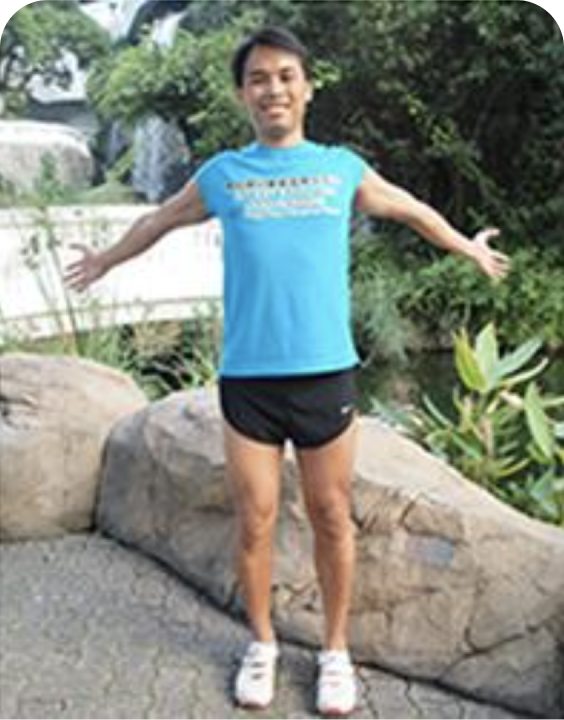
Pactoralis Major+Biceps
Open and straighten the arms at shoulder level and allow both hands to reach each other behind you.
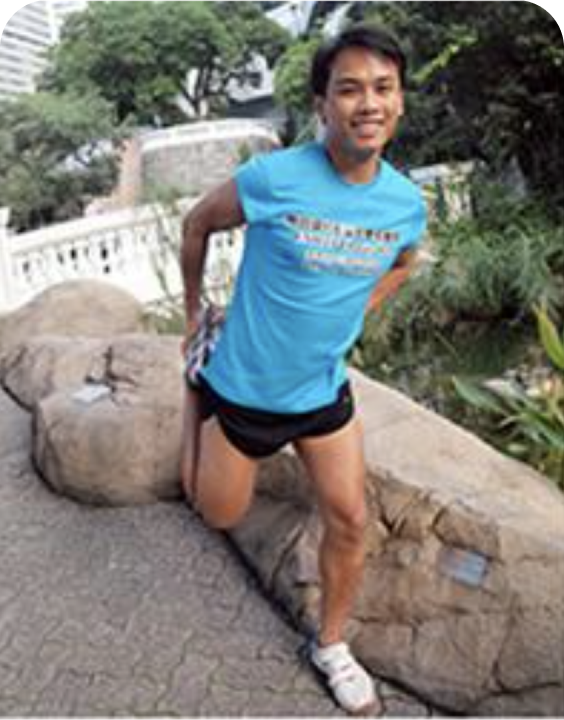
Quardriceps Femoris
Engage the abs, bend the right knee, hold the right ankle with the right hand, and extend the right heel towards the right hip.
(You may lean against a wall to gain balance) *
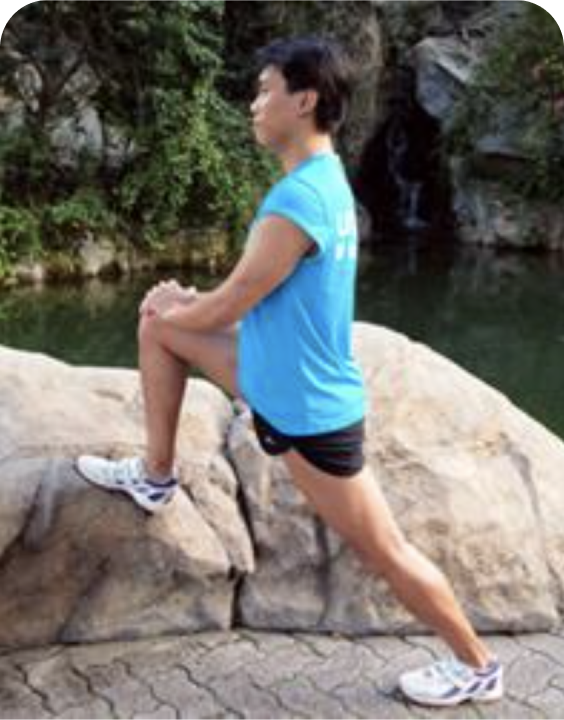
Gastrocnemius
Stand on one leg in the front and the other at the back with toes pointing forward.
Slightly bend the front knee (make sure the front knee doesn’t pass the toes), extend the back leg and allow the heel of the back leg touch the ground.*
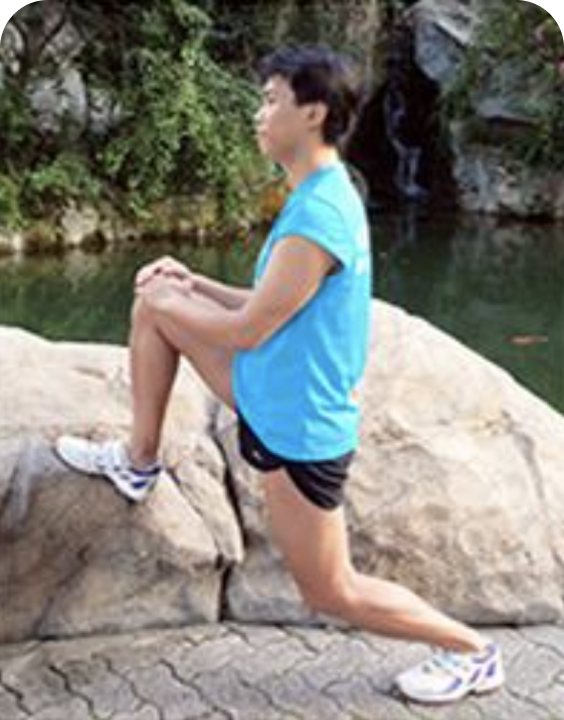
Soleus
Hold the position of Gastrocnemius, then slightly bend the back knee, while the heel should still be firmly touching the ground.*
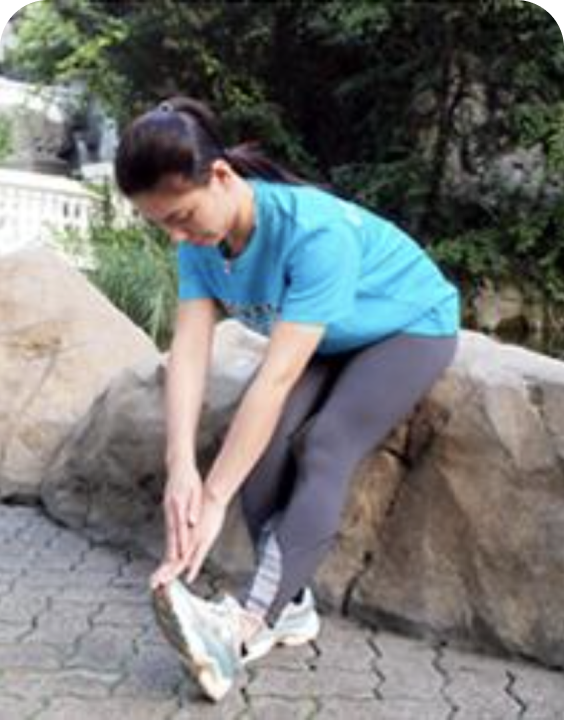
Hamstrings
Sit down, extend one leg, engage the abs, straighten the back and bend forward.*
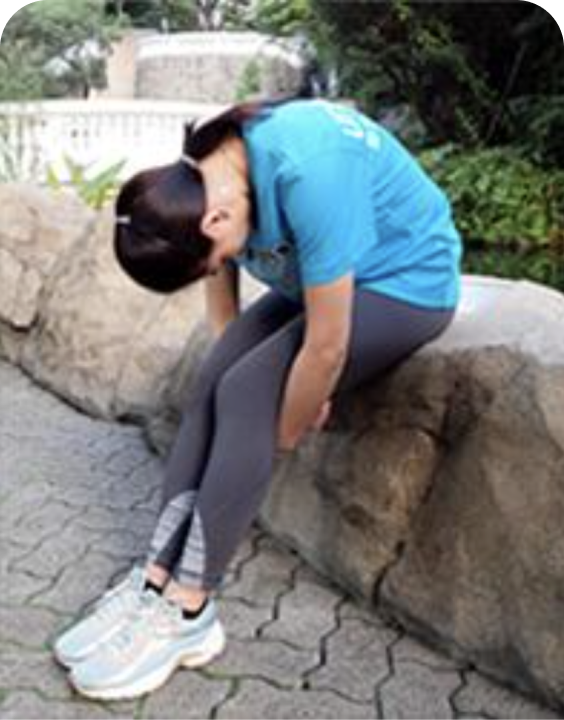
Erector Spinae
Sit down, bend the knees and round the back. Interlock the hands behind the thighs. Push the belly button inwards and backwards.
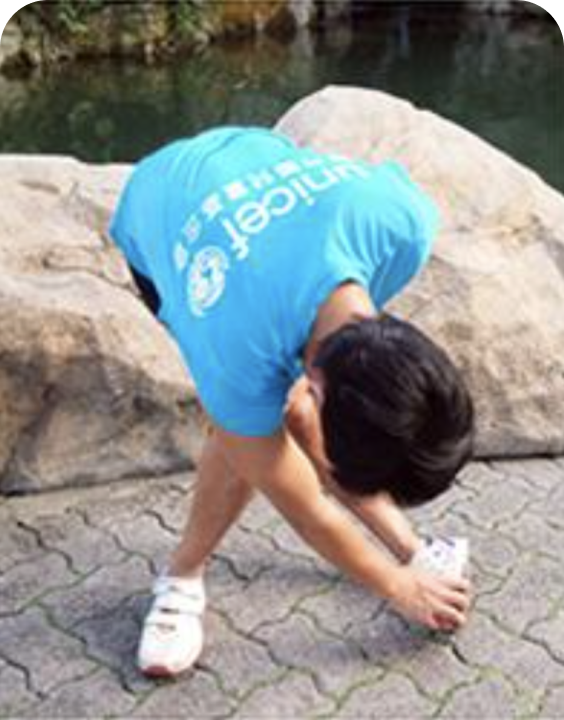
Tensor Fascia Lata
Cross the right leg with the left leg at the back and bend the left knee. Engage the abs and allow the right hand to touch the right toes.*
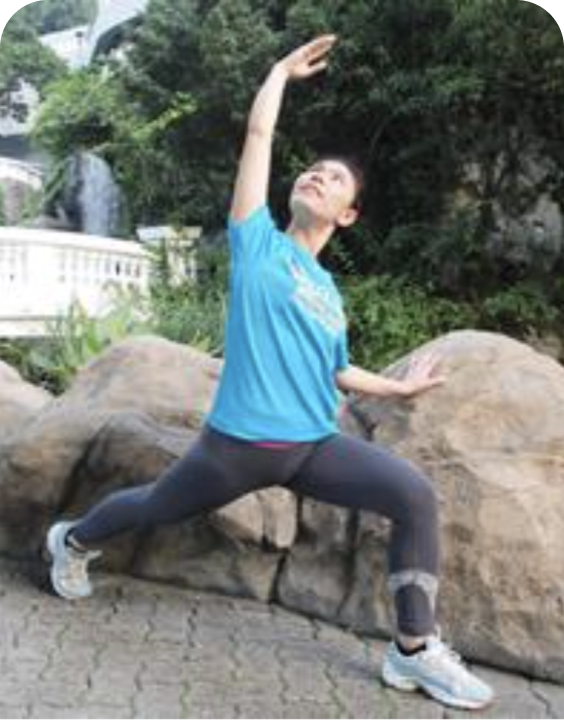
Illopsoas
Launch position, toes pointing forward. Make sure your front knee doesn’t pass the toes. Engage abs, point your tailbone towards the front (Pelvic Tilt). Raise your arm (same side as the back leg), side bend to the other side.*
P.S.: *Repeat on the other side
Health Advice
- All interested participants should consider their health conditions before enrolment.
- Prior to the race, if participants feel unwell, they should seek medical advice and decide whether they should attend the race.
- During the race, if participants feel unwell, they should seek assistance from officials.
Advice on Weather and Air Quality Health Index
Please pay attention to the announcements from the Organizer, radio or TV stations about the Air Quality Health Index (AQHI) on the event day. Below are some precautionary actions recommended by the Environmental Protection Department (EPD) for your reference:
If the AQHI reaches 7, it means the health risk is High. Children, elderly, as well as those with existing heart or respiratory illnesses, or sensitive to air pollution, are advised to reduce outdoor physical exertion and the time of staying outdoors, especially in areas with heavy traffic. People with existing heart or respiratory illnesses should also seek medical advice from doctors before participating in sport activities and take more breaks during physical activities.
If the AQHI reaches 8 to 10, it means the health risk is Very High. General public is advised to reduce outdoor physical exertion and the time of staying outdoors, especially in areas with heavy traffic. People who are sensitive to air pollution are advised to reduce outdoor physical exertion and the time of staying outdoors, especially in areas with heavy traffic, to the minimum.
If the AQHI reaches 10 or above, it means the health risk is Serious. General public is advised to reduce outdoor physical exertion and the time of staying outdoors, especially in areas with heavy traffic to the minimum. Participants who are sensitive to air pollution are advised to avoid outdoor physical exertion, and to avoid staying outdoors, especially in areas with heavy traffic.
In case of discrepancies between the Chinese and English versions, the English version shall prevail.
